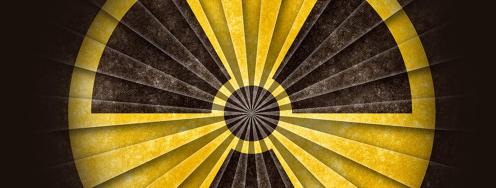Obama’s Last Chance to Leave a Nuclear Legacy
On the radar: Obama supports Test Ban Treaty; The President’s nuclear burden; What Nagasaki teaches us; and Reagan diplomacy in Iran
Last chance for Obama’s nuclear legacy - “The Air Force has formally begun the process of asking defense contractors to submit proposals for a new long-range cruise missile and a new land-based intercontinental ballistic missile. The... requests… contradict President Obama’s 2009 promise to change American nuclear policy in ways that would make the nation safer by reducing threats from the world’s most lethal weapons. Mr. Obama, who knows he is running out of time to make good on that pledge, recently made one positive decision — to pursue a United Nations Security Council resolution that calls on all nations to refrain from nuclear testing and to ratify the Comprehensive Test Ban Treaty,” writes the editorial board of The New York Times.
--“There are other legacy-building moves Mr. Obama can take before he leaves office, not least rolling back the Pentagon’s outsize plans to modernize the entire nuclear arsenal over the next 30 years, including aircraft, submarines and warheads, at an estimated $1 trillion. The cruise missile and the intercontinental ballistic missile are just a part of those plans. Under current budget caps, spending all that money on nuclear capability will leave little for conventional weapons.” Full piece here. http://nyti.ms/2aZkG64
See also - “A UN Security Council Resolution on Nuclear Testing Would Not Bypass the Senate,” by Michael Krepon for Stimson Spotlight. http://bit.ly/2aWKGmy
Tweet - @DarylGKimball: Why @POTUS plan to reinforce taboo against nuclear testing is good for US and world. #CTBT20 http://bit.ly/2axSdYw
The President’s unlimited nuclear power - “Is there any check on a president’s power to launch nuclear arms that could destroy entire cities or nations? The short answer is no… If the United States appeared to be under nuclear assault, the president would have minutes to decide whether the threat was real, and to fire as many as 925 nuclear warheads with a destructive force greater than 17,000 Hiroshima bombs, according to estimates by Hans M. Kristensen, the director of the Nuclear Information Project at the Federation of American Scientists,” write William Broad and David Sanger for The New York TImes.
--“Experts agree that the real nightmare of nuclear command centers not on launching attacks, but responding to them. In a recent memoir, William J. Perry, secretary of defense to President Bill Clinton, called it ‘the immense peril we face when in mere minutes our leaders must make decisions affecting the whole planet.’” Full article here. http://nyti.ms/2apCXbu
The Insanity of nuclear decision making - “The one thing that movies get really wrong about the decision to use nuclear weapons is how long the discussions last. In film, people argue endlessly, talking for minutes and minutes about whether and how to respond to a nuclear attack. It’s all very dramatic. The nuclear command and control system, however, is designed to function under crushing time pressures. And it does so by removing any opportunity for the president to weigh his or her options or modify existing plans,” writes Jeffrey Lewis for Foreign Policy.
--“My advice to any future president would be to drop launch under attack as a mainstay of U.S. nuclear policy. Some systems might still be capable of launching quickly, but I would design the nuclear force around the assumption that the president plans to ‘ride out’ a nuclear attack… The Obama administration has made some steps in this direction, instructing the military to plan for more realistic contingencies — but it has still elected to retain launch under attack as an option.” Full article here. http://atfp.co/2aoNgB5
Tweet - @Cirincione: So you think this is all about strategy? A windfall for contractors: Who Wants To Replace U.S.’s Nuclear ICBMs? http://bit.ly/2bcnJLp
Remembering Nagasaki - “The need to destroy Hiroshima will be forever debated, but the counterarguments were unpersuasive to President Harry Truman and Secretary of War Henry Stimson… The arguments in favor of the first explosive use of an atomic bomb do not apply to the second. Japan’s War Cabinet was absorbing the twin shocks of Hiroshima and Russia’s declaration of war against Japan. At a minimum, Truman and Stimson should have waited more than three days before obliterating Nagasaki and killing its inhabitants,” writes Michael Krepon for Arms Control Wonk.
--“The historical example of Nagasaki speaks volumes about how hard it is leaders to grind the machinery of warfare to a halt once the first mushroom cloud appears. Nagasaki therefore demands our attention as much as Hiroshima. The fundamental lesson of Nagasaki is that a second nuclear detonation follows the first.” Full article here. http://bit.ly/2aS5VkU
Tweet - @CNS_Updates: How quickly could a U.S. President launch nuclear weapons? Turns out there isn't much time to debate the decision - https://t.co/jpuh2jNwyw
Reagan and the Iran Deal - “As someone who worked under President Ronald Reagan as an assistant secretary of defense—and as someone who witnessed firsthand Reagan’s evolution on the efficacy of arms control efforts—watching the unremitting hostility of so many Republican officials toward the Iran nuclear agreement has been nothing short of a remarkable experience,” writes Lawrence Korb for The Bulletin of the Atomic Scientists.
--“The Iran deal is not a formal treaty like SALT II, but a political agreement between Iran and the permanent members of the UN Security Council and Germany, or P5+1. In its use of diplomacy to reduce the security dilemma of the United States and its allies, however, the accord has so far proven to be quite successful… As President Reagan understood, acknowledging that American power is both awesome but still limited by constraints inherent to the international system is not a sign of weakness, but in fact represents the foundation upon which successful statecraft is built.” Full piece here. http://bit.ly/2bguOrD
Quick Hits:
--“How to Keep an Atomic Bomb From Being Smuggled Into New York City? Open Every Suitcase With a Screwdriver,” by Kai Bird for The New York Times. http://nyti.ms/2bbl56J
--“Nuclear biscuits and footballs: How the president launches an atomic bomb,” by Dugald McConnell and Brian Todd for CNN. http://cnn.it/2b3zwv4
--“Time to Retire the Nuclear Football,” by Diana Ohlbaum for LobeLog. http://bit.ly/2b3vcfe
--“On the anniversary of Hiroshima, this graphic reveals the power of US nuclear bombs,” by Rebecca Harrington for Business Insider. http://read.bi/2aJn4P7
--“Trump wouldn't be first to weigh nukes,” by Marc Ambinder for USA Today. http://usat.ly/2b7DZyw
Events:
--International Day Against Nuclear Tests, August 29. http://bit.ly/YGJsRd
--Screening of Command and Control, September 23 through 29 at the Landmark Theatres E Street Cinema, 555 11th St. NW, Washington. http://bit.ly/2aXwKFZ



